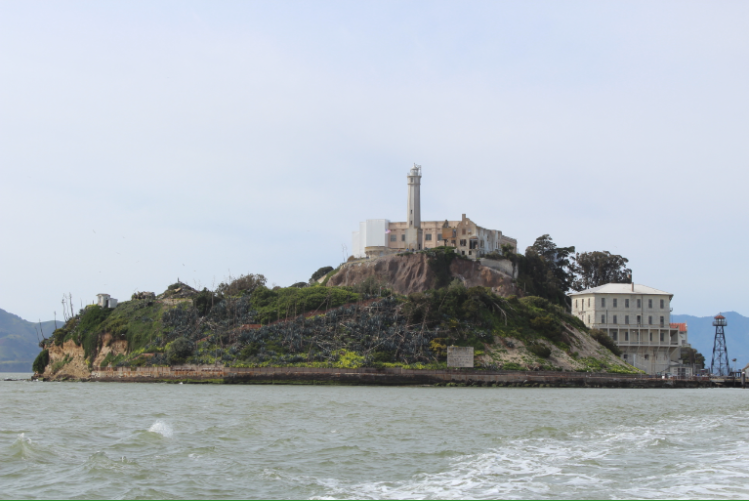Exploring Alcatraz
(More Photos of the Alcatraz trip in the Gallery)
March 20, 2017
I don’t travel much. I’ve only left California once, and that was for a brief wedding in Las Vegas. I was 7 then, and the most fun I had was riding the elevator.
Even within California, where practically anything is available, I can’t say I’ve seen or done much. So believe me when I say I was pretty excited to visit San Francisco, a city I’d never been to before.
I was even more excited when some of the students wanted to visit Alcatraz Island, home of the infamous Alcatraz Federal Penitentiary. A larger group had planned to go, but the ferry to the island was sold out and only Lizette Chavez, Kylie Hendrickson and myself had ordered the tickets the night before. Unfortunately, on the Friday morning we were going, we were running late, which always stresses me out. We frantically got an Uber, and thankfully showed up on time to pick up our tickets, glance at the really cool model of Alcatraz and get in line.
What’s great about Alcatraz is that it’s a national park, so it’s actually free to attend. What would be really great is if I didn’t have to spend $35.50 for the ferry ride, but after spending money in San Francisco, I’m just grateful it wasn’t more.
The first thing I noticed when we docked was the foliage on the island. Alcatraz was a barren island for a long time, but these days it’s bursting with beautiful green moss and vines growing through any cracks to be found and completely reclaiming rickety wooden staircases. Kylie and I must have looked pretty odd, standing and staring at walls for five minutes straight.
The next thing that was immediately noticeable was the Native American history on the island. Above the Alcatraz sign are the words, “Indians Welcome,” spray painted in red.
There were even more painted on the water tower. We found out that native people had occupied the island for 19 months in order to claim it as a cultural center for Native Americans and to protest the how government continually broke their treaties.
One work of art in the exhibit had the words, “We are still here,” which I found particularly poignant considering the current protest of the Dakota Access Pipeline on native lands.
I will admit that as much as I love learning about history, the extent of my knowledge of Alcatraz was that Al Capone was held there and that some prisoners escaped.
Turns out it has a much longer history than I think most people are aware of, and if I could do one thing differently, I would have taken the audio tour.
I had no idea, for instance, that the island was a military prison before it was a federal penitentiary. Not only did they prep Alcatraz with cannons during the Civil War, but they also held Confederate sympathizers as prisoners.
We headed uphill to see the main prison, where most of the cells were about as big as my bathroom. They had chipping paint, tiny sinks, and broken porcelain toilets. We got to see Al Capone’s cell, but it was up on the second floor of cells so we were not allowed to see it up close. A couple of cells were set up as an exhibit to show how three men escaped from the island. The convicts took off small grates, opened up the wall around them, and slipped through an unused utility hallway to get out of the prison and into the water.
They painted and cut boxes to look like the grates they had taken off, and made and painted papier-maché heads with real human hair to fool the guards. Their efforts were surprisingly artistic, and I was impressed. The most dismal area of the jailhouse was the solitary confinement cells. These had thick heavy doors in addition to the barred door inside, which were used to shut out all light when a prisoner was put in solitary.
We were allowed to go inside these cells, and I couldn’t help but feel a lot of sympathy for the people who were held there.
We also met a man who was a guard on Alcatraz and experienced a murder on the first hour of the first day of his job. It made me feel bad about ever complaining about insurance customers at my old job.
The last place we had time to visit was the lighthouse. Alcatraz actually had the first lighthouse on the West Coast, but the first one had to be taken down after an earthquake and was replaced with a much more impressive concrete one, which I was completely enamored with.
As we left, I felt that the trip had demystified the island. I always hear about Alcatraz like it’s haunted, but when I visited I got the sense that it was a place that people really lived, and spent some of the worst years of their lives.






